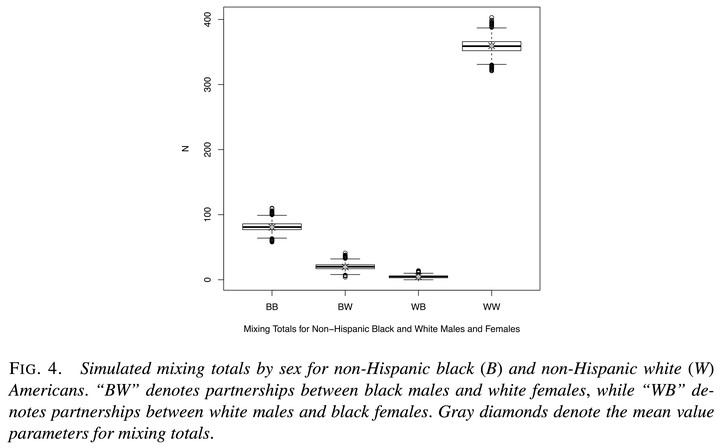Modeling Concurrency and Selective Mixing in Heterosexual Partnership Networks with Applications to Sexually Transmitted Diseases

Abstract
Network-based models for sexually transmitted disease transmission rely on initial partnership networks incorporating structures that may be related to risk of infection. In particular, initial networks should reflect the level of concurrency and attribute-based selective mixing observed in the population of interest. We consider momentary degree distributions as measures of concurrency and propensities for people of certain types to form partnerships with each other as a measure of attribute-based selective mixing. Estimation of momentary degree distributions and mixing patterns typically relies on cross-sectional survey data, and, in the context of heterosexual networks, we describe how this results in two sets of reports that need not be consistent with each other. The reported momentary degree distributions and mixing totals are related through a series of constraints, however. We provide a method to incorporate those in jointly estimating momentary degree distributions and mixing totals. We develop a method to simulate heterosexual networks consistent with these momentary degree distributions and mixing totals, applying it to data obtained from the National Longitudinal Study of Adolescent Health. We first use the momentary degree distributions and mixing totals as mean value parameters to estimate the natural parameters for an exponential-family random graph model and then use a Markov chain Monte Carlo algorithm to simulate person-level heterosexual partnership networks.